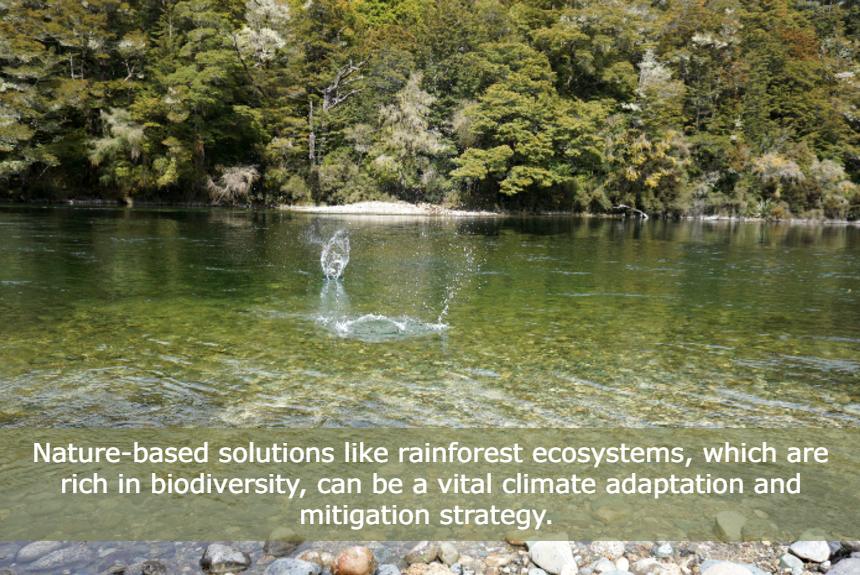A summary of the presentation and participant discussions during the 2018 Sackler Scientific Forum.
“A lot is happening in the ocean, even in places that used to be so far away from us that we couldn’t imagine having any impacts at all.” —Nancy Knowlton, Smithsonian Institution.
Scientists and Experts in climate change, ecology, land use, and biodiversity came together in the Sackler Forum on Climate Change and Ecosystems that the National Academy of Sciences and The Royal Society jointly organised in Washington DC on 8-9 November 2018.
The forum brought together “leading scientists and practitioners in the fields of climate change, ecology, land use, and biodiversity”. It provided an opportunity for sharing current research, knowledge, and collaboration, which do not commonly happen.
The paper “Climate Change and Ecosystems” summarizes the presentations and collaborations during the forum.
According to the paper, climate change is “posing widespread and complex challenges to species and to ecosystem functions, as well as to associated services that natural systems provide to society.”
The summary also says that healthy ecosystems can help society adapt to altered conditions caused by climate change through nature-based solutions and that well-managed landscapes and seascapes are part of the solution to climate change.
Ecosystems and their composition
The following are some notes we gleaned from the summary:
- Ecosystems are composed of plants, animals, people and other living things that interact with the physical environment around us.
- Ecosystems provide us with food, water, and air vital for survival and a source of recreation, inspiration, and protection from natural hazards while hosting a diverse set of living things,” the summary says.
- Despite the pressures from climate change, ecosystems show resilience, especially ones that are healthy and retain most of their original species.
- Ecosystems provide nature-based solutions to mitigate and adapt to climate change. Remove ‘heat-trapping’ greenhouse gas from the air and store it in biomass, soils, and the ocean. Reforestation can protect us from the impacts of climate change by restoring ecosystems like mangroves and wetlands.
The summary added “enough scientific evidence to support decisions and actions that promote ecosystem health, adaptive capacity, and mitigation potential…for societal adaptation to climate change.”
The 2018 Sackler Scientific Forum content
The 30-page summary is divided into four chapters that provide an interesting discussion on our ecosystems about climate change.
Chapter 1, Ecosystems are rapidly changing, discusses changes to terrestrial freshwater and marine ecosystems.
Chapter 2, Sustaining Ecosystems in the Face of Climate Change, tackles the role of established conservation practices in climate adaptation, genetics in climate adaptation, and new conservation challenges in a changing climate.
Chapter 3, Ecosystems as a climate solution, talks about the ecosystems and climate change mitigation, ecosystems and societal adaptation to climate change.
Chapter 4, Advancing the science while moving to action, research priorities to advance the science, communication to diverse audiences, interdisciplinary networks, translation of science to action, and concluding thoughts.
The summary concludes that climate change is here. Either societies or ecosystems will accept a warmer world or take action to limit warming.
Ecosystems play a significant role and could act as a ‘buffer’ to major changes through the health and diverse species it hosts.
Ecosystems’ value should be communicated to all levels of society, and nature-based solutions can be essential mitigation and climate adaptation strategies. They can achieve the most significant impact when implemented hand-in-hand with actions to reduce greenhouse gas emissions.
Benefits from sound and balanced ecosystems can also be attained when they are managed for multiple services and transcend institutional, geographic, or habitat-based boundaries.
You can read the full document by clicking on the image below:
Source:
UNFCCC and IUCN. 2022. Innovative Approaches for Strengthening Coastal and Ocean Adaptation – Integrating Technology and Nature-based Solutions. United Nations Climate Change Secretariat. Bonn. Retrieved from https://unfccc.int/ttclear/misc_/StaticFiles/gnwoerk_static/2020_coastalzones/6b21319a3b9b4da3ac693a751f2f1cf5/6d16eef959ae429abeb65b6ca13e7213.pdf



Leave a Reply